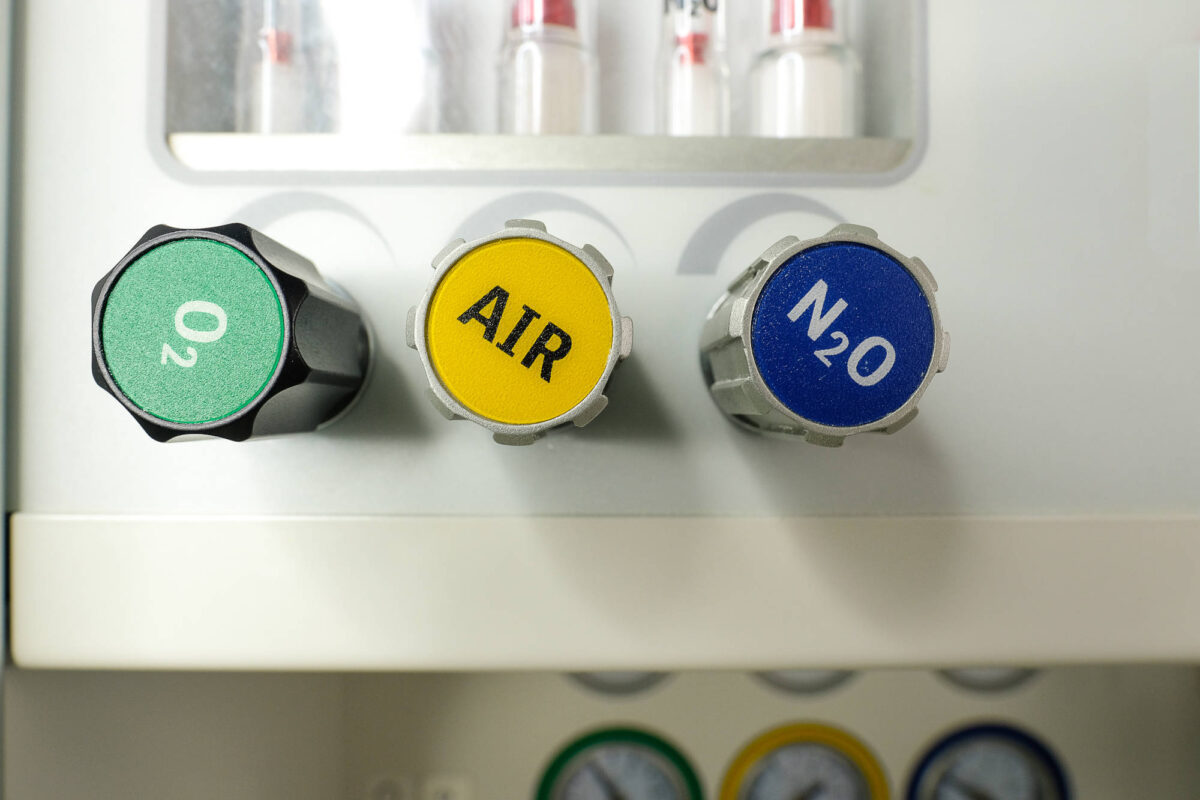The Environmental Impact of Inhaled Anesthetics

Medical professionals once dealt with an unfortunate reality: the seemingly miraculous gases used for their patients’ anesthesia were being released into their operating rooms, with unintended long-term effects on the health of their medical staff. Unwilling to give up on the anesthetics as a method of pain relief, scientists actively searched for a solution that would mitigate the risks these gases posed to those present in the OR and determined that proper ventilation could effectively expel the anesthetics out of the operating room. Now, scientists are grappling with another concern as they seek to understand what happens to these gases when they are shed into the atmosphere. Although their concentrations in the air pose a negligible risk to human health, usage of inhaled anesthetics has evoked significant concerns about the health of our planet.
The list of greenhouse gases published by the Environmental Protection Agency (EPA) includes desflurane, sevoflurane, isoflurane, and nitrous oxide1, some of the most commonly used inhalational anesthetics. Although breathing masks prevent anesthetic gases from leaking into the operating rooms and through ventilation systems, such techniques do not eliminate their infiltration into operating rooms completely. Additionally, only 5 percent of inhaled anesthetic gases are metabolized by a patient2, meaning that they exhale a significant portion back into the air. These “waste gases” are then shed into the atmosphere.
Although desflurane, sevoflurane, and isoflurane all contribute to global warming and the depletion of the ozone layer, their impacts vary significantly, making sevoflurane and isoflurane much more preferable for use in the operating room. Desflurane has particularly caught the attention of scientists due to its 10-year lifespan in the atmosphere, compared to sevoflurane and isoflurane which persist in our air for approximately 1.2 and 3.6 years, respectively3. Nitrous oxide is typically utilized in different medical settings: when the patient does not need to be rendered unconscious, or as a carrier gas when other anesthetics are being administered. While the gas is used for less “powerful” purposes than other inhalational anesthetics, nitrous oxide is perhaps the most concerning as one of the top five greenhouse gases.
Fortunately, studies have shown that a few simple modifications can significantly reduce the amounts of anesthetic waste gas released. When possible, substituting sevoflurane or isoflurane for desflurane is ideal, as the environmental impacts of these gases are not as strong. Nitrous oxide, contrarily, does not have a “perfect substitute” when used alone, but its usage as a carrier gas can be minimized by swapping it with a less impactful carrier gas. The American Society of Anesthesiologists also recommends several techniques for reducing waste anesthetics, such as decreasing gas flow rates during surgery, ensuring that masks are properly fit, and preventing the flow of excess gases by ensuring that anesthetics are not freely flowing into the air before or after they are in use4. Proper anesthetic practices are essential in limiting the detrimental environmental effects of anesthetic gases.
Relative to other emissions, anesthetics make up only a small fraction of the world’s greenhouse gases, and unlike other industries, the government has yet to place restrictions on the emissions of hospitals and other medical facilities. The importance of medicine likely contributes to the lack of governmental regulation, as government officials are hesitant to put a strain on a service that is so essential. Although anesthetics only make up approximately 0.01% of global fossil fuels5, wasted anesthetic gases make up 8% of carbon dioxide emissions in the United States6.
Given the stresses that are already being placed on the environment, many people in the healthcare industry feel that if medicine’s environmental footprint can be lessened, steps should be taken in order to do so. Any contribution to the emission of greenhouse gases is detrimental to the world’s efforts to slow global warming and the depletion of the ozone layer, and while anesthetic gases do not pose a threat so significant that they must be phased out, employing forward-thinking strategies can significantly reduce the harmful environmental effects of inhaled anesthetics. Just as scientists once dealt with the dilemma of reducing waste anesthetics in operating rooms, it is now in the hands of the healthcare industry to pursue new anesthetic practices to fully eliminate the negative environmental effects of waste anesthetic gases.
References
1 https://www.epa.gov/sites/production/files/2020-04/documents/us-ghg-inventory-2020-main-text.pdf
2 https://www.ncbi.nlm.nih.gov/pmc/articles/PMC4173371/
3 https://www.ncbi.nlm.nih.gov/pmc/articles/PMC3522493/#:~:text=Desflurane%20has%20a%2010%2Dyear,times%20the%20potential%20of%20isoflurane.
4 https://www.ncbi.nlm.nih.gov/pmc/articles/PMC3522493/
5https://www.npr.org/sections/health-shots/2019/05/06/716415598/effects-of-surgery-on-a-warming-planet -can-anesthesia-go-green
6 https://anesthesiaejournal.com/index.php/aej/article/view/58/53
